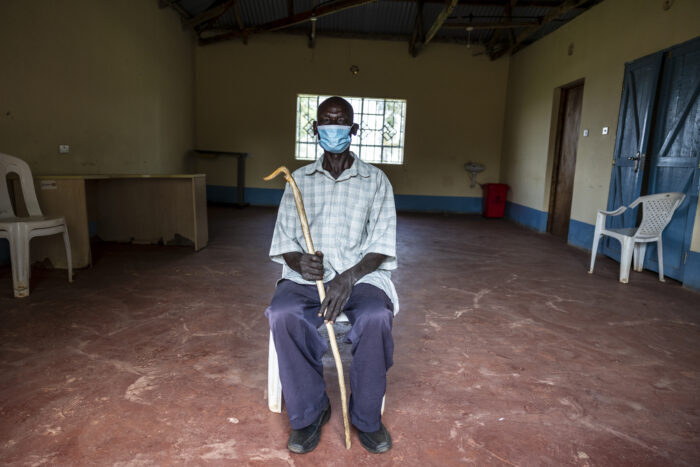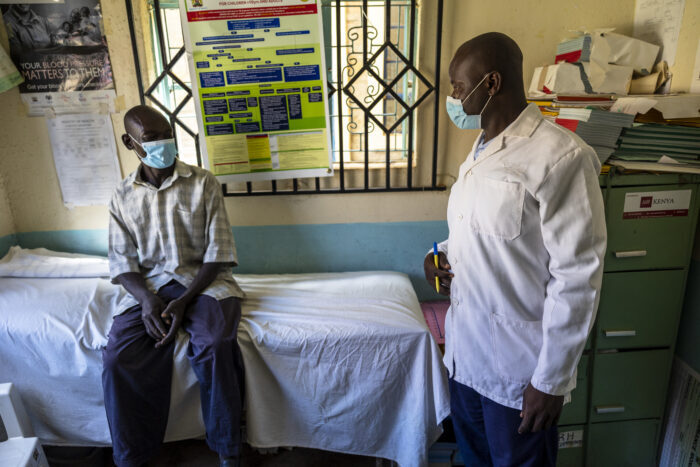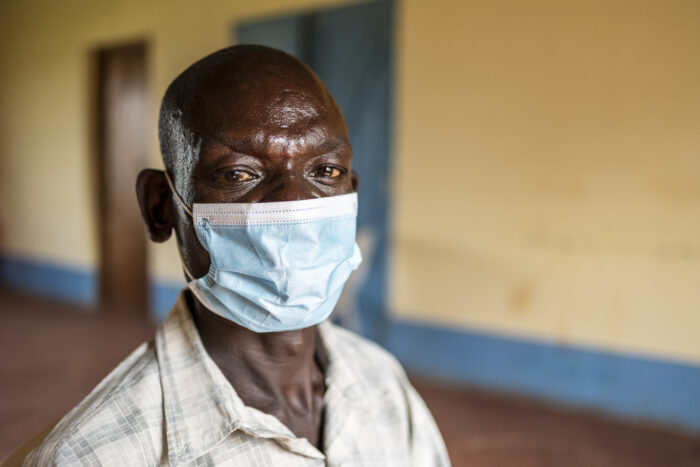
The significant increase in antiretroviral coverage has decreased the burden of HIV illness and deaths in Kenya. Still, one in three people living with HIV present to care with advanced HIV disease (AHD) and at high risk of death from HIV related opportunistic infections such as tuberculosis (TB), a leading cause of AIDS-related deaths.
“A client is categorized as having AHD when they present with a CD4 count of less than 200 says EGPAF’s Gideon Mikoye Libulele. “Newly HIV diagnosed children younger than age of 5 are also considered AHD because their viral suppression status is unknown, as are those returning to HIV care having interrupted treatment.”
Libulele warns that the risk of death increases with a decreasing CD4 count and that among the causes of death for people with AHD is cryptococcal meningitis, severe bacterial infections, and Kaposis sarcoma, a cancer that is more common in HIV-infected patients than in the general population.
This is the risk that Joseph Gowi Obuanga was facing in 2019 when he visited Kabondo Sub-County hospital, his primary health facility, for a routine checkup.
There was nonetheless nothing routine about this visit as Obuanga would become the first of three HIV clients to be diagnosed with Kaposi’s sarcoma at the facility.
“It started as small bumps on my legs. Before long, my legs became so swollen that I could not wear shoes or walk without crutches,” Obuanga explains.
With this, his life came to a standstill as he could no longer engage in income-generating activities. His wife was expecting a child, and fear of the unknown heightened their distress.
Fortunately, Obuanga was in the right hands. Whereas AHD has long been best managed at major county referral hospitals, Kabondo Sub-County hospital was up to the task.
The Advanced HIV Disease Special Units

Four HIV care and treatment providers at the facility had participated in an EGPAF-supported capacity building session to start and run a special unit to manage AHD patients.
“Health providers were trained to offer a package of care that includes comprehensive screening for other opportunistic infections that may have set in, treatment and intensified drug adherence support to AHD clients,” Leonard Okumu, the Sub-County AIDS and STI coordinator, explains.
“We have the capacity to detect and intervene before the situation escalates to AHD and other opportunistic infections. AHD cases that need referral for service such as chemotherapy, are referred and followed-up to ensure that they receive referred services.”
Libulele adds that detecting AHD early requires a high level of clinical suspicion. He says a HIV client may appear to be responding well to treatment but still be a step away from AHD.
He references data reviewed at the Homabay County Referral Hospital indicating that 3 percent of overall virally suppressed clients in the county are presenting with AHD.
“We learned about the different types of treatment failures that could accelerate HIV disease progression. There is virologic failure which is determined through a viral load. We have immunological failure determined through a CD4 count. Clinical failure can also be determined by physically observing a HIV client,” says Angela Nyagaata, a clinician at the facility.
“All these factors are critical in the prevention and management of AHD. AHD can be prevented through the provision of quality care and treatment as it slows down disease progression. Diagnosed early, Kaposi’s sarcoma may not require chemotherapy and is curable,” she says.
Still, Okumu cautions that even where a treatment regimen is followed to the letter, research projects that a certain percentage of HIV patients on ART will still become virally non-suppressed.
“EGPAF has equipped staff at this facility with skills to look out for this category of patients as they are highly vulnerable to AHD and even death from HIV related opportunistic infections,” he observes.
Stephen Omondi, a nurse at the facility concurs, indicating that at the onset of this treatment model, there were 24 cases of AHD. Today, there are 16 AHD patients out of 1,357 HIV patients.
“We have the capacity to detect and intervene before the situation escalates to AHD and other opportunistic infections. AHD cases that need referral for service such as chemotherapy, are referred and followed-up to ensure that they receive referred services,” Omondi explains.





